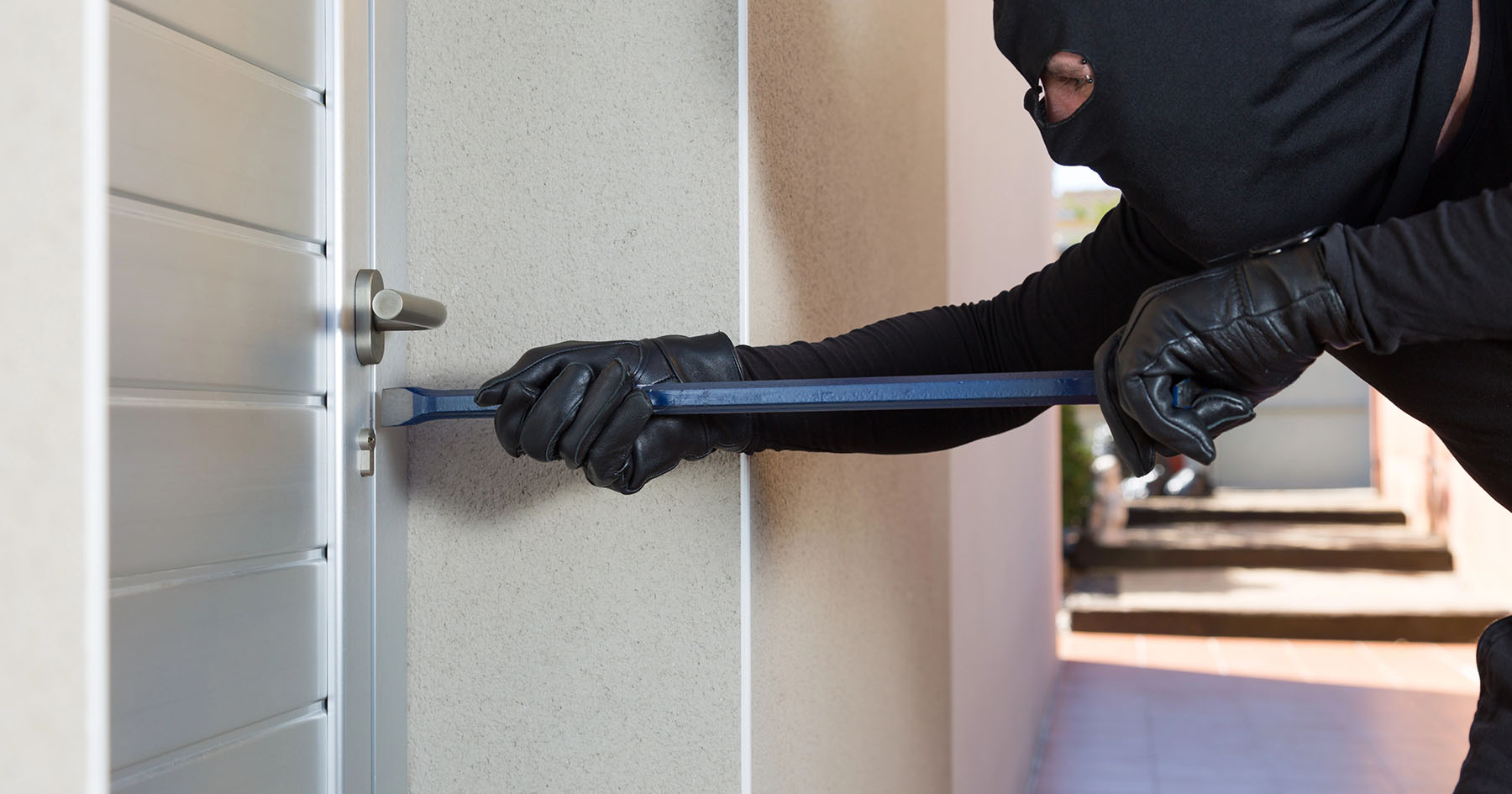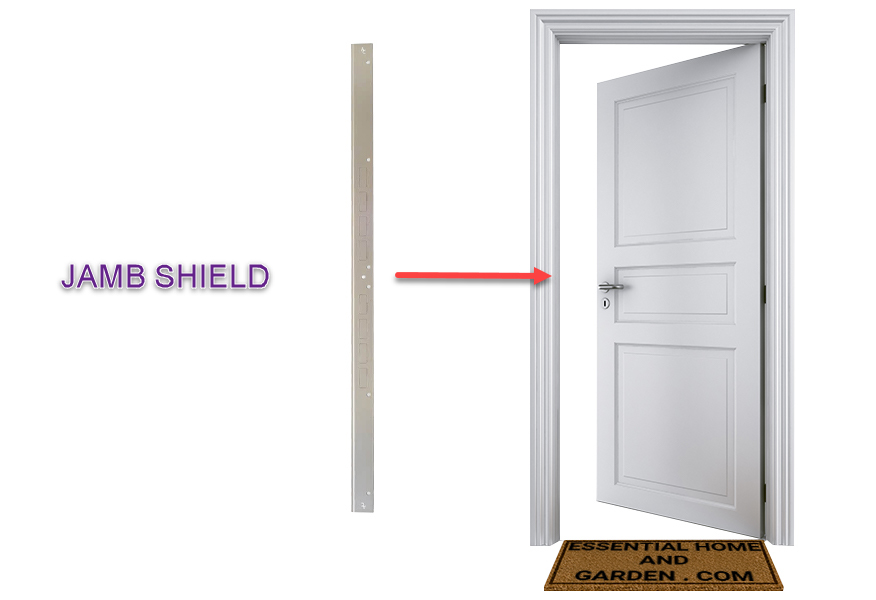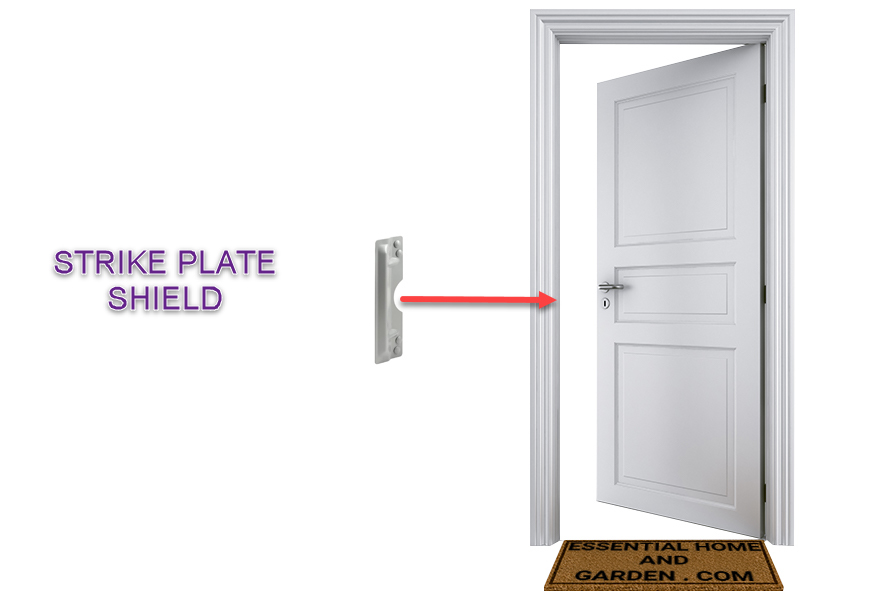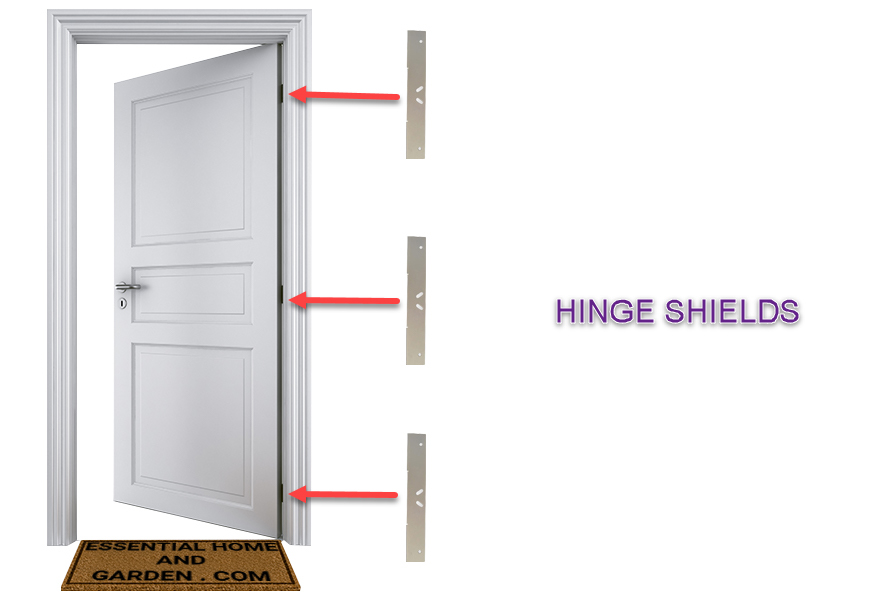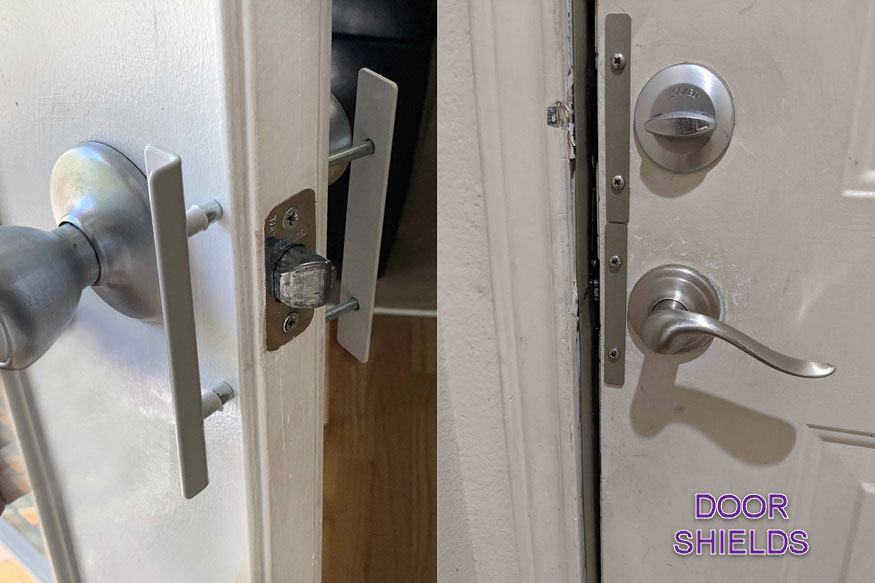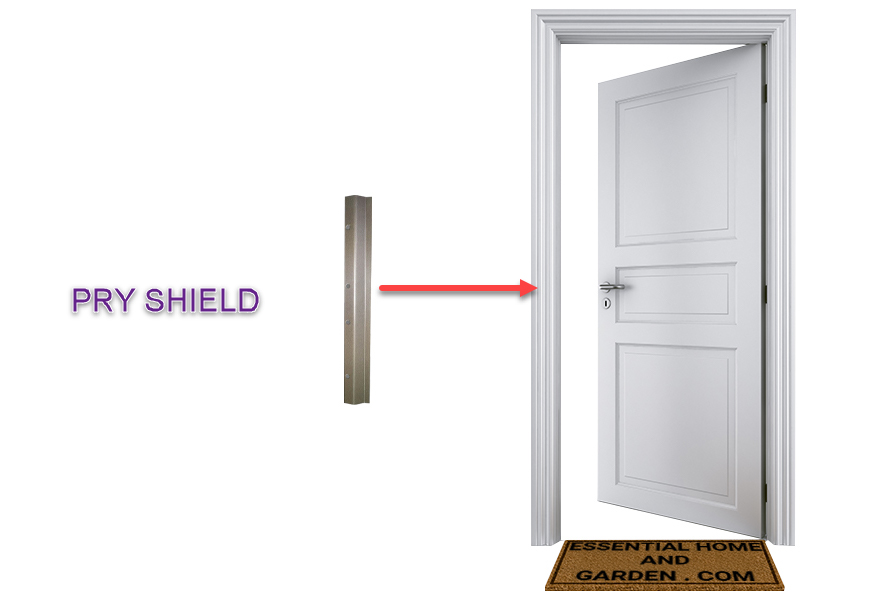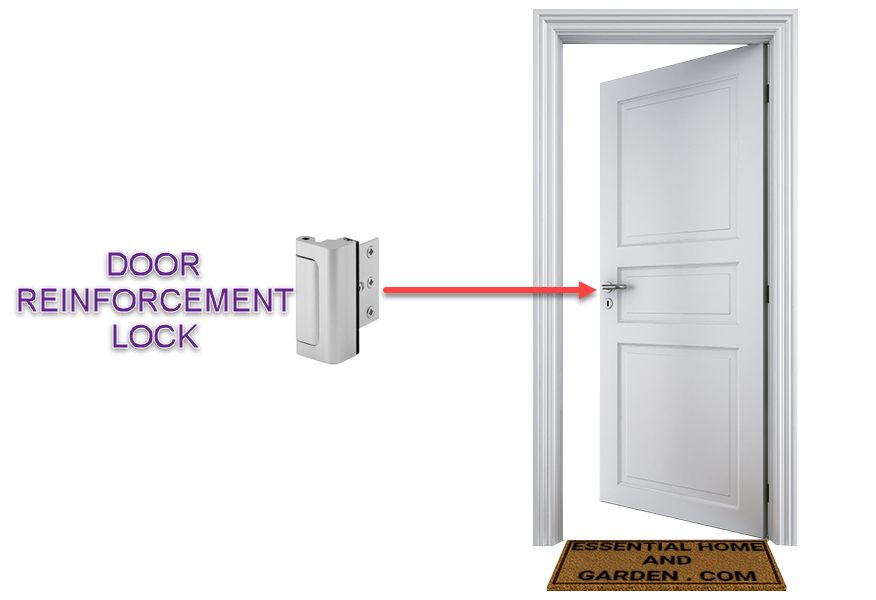Making your door secure against forced entry requires understanding both the components and materials involved.
Here’s a comprehensive guide to door security components and how they work together to keep you safe.
Jamb Shield
Door jamb reinforcement shields help reinforce the jamb’s area that your knob and lock bolts fit into when the door is closed and locked. This area is the weakest point of any locked door, so you should secure it above any other.
Long jamb shields offer multiple anchoring points to ensure durability against extreme force. You can use these shields to secure new doors or repair damaged jambs.
We have a full article on the best door reinforcement kits to buy here.
Strike Plate Shields
Strike plate shields are similar to jamb shields in function but only offer coverage for the area immediately around where the lock receptacles. They are sturdier than traditional strike plates but not as effective as jamb shields in preventing forced entry.
Because they require less hardware and take up less space, they are easier to install than long jamb shields.
Hinge Shields
Hinge shields are long, flat pieces of steel that fit over your hinges. They are anchored through the original hinge holes as well as at each end. Like all other jamb-installed shields, you will need to use extra-long screws that tap into the wall stud.
These shields protect your hinges from pulling out of the wall in case an intruder tries to kick in the opposite side of the door. They are also effective in stopping a battering ram from collapsing the entire door when used with a jamb shield.
Door Shields
Door shields reinforce the area around the door hardware on the door itself.
When you reinforce the jamb, the door’s weakest point becomes the area around the knob and deadbolt. With enough force, the hardware can pull free from the door, or the door can splinter around these points. A door shield prevents both of these from occurring.
Security Screws and Hardware
The effectiveness of your door security relies heavily on proper hardware selection. Security screws come in various sizes, with diameters typically ranging from 1/8 inch to 1/4 inch and lengths from 3/8 inch to 3 inch.
For maximum security, choose stainless steel screws for their superior strength and corrosion resistance, or opt for zinc-plated steel as a cost-effective alternative.
Screws should be at least three inches long to ensure they tap into the wall stud. Look for security-style heads like “snake eye” or “pig nose” that require special tools for installation and removal, making unauthorized tampering more difficult.
Door and Frame Considerations
Your door’s material plays a crucial role in overall security.
Common options include:
- Wood: Traditional and versatile, offering customization options
- Fiberglass: Durable and weather-resistant
- Steel: Provides excellent security and requires minimal maintenance
Steel frames can be manufactured from Zincanneal or Galvabond steel, with thicknesses ranging from 20-gauge (0.035 inches) to 13-gauge (0.095 inches).
For areas prone to corrosion, consider stainless steel frames.
Pry Shields
A pry shield offers an extra level of protection against forced entry. While most door reinforcement pieces are focused on preventing access via inward pressure, such as from a shoulder blow or a kick, pry shields are there to help prevent the door from being pried open.
Door Reinforcement Locks
Reinforcement locks are specialized locking devices that fit inside the door to prevent it from being forced open. Unlike traditional locks that work inside the door, these function more as braces exterior.
They are attached to the jamb and fold over the door’s surface or connect to it when it’s closed to prevent it from being opened inward.
Night Locks

Night locks are specially designed to be used while you are home. They typically consist of two pieces that work together to prevent forced entry while allowing easy egress when needed. For added security, these locks are often installed on exterior doors, such as the front and back doors, to provide an extra layer of protection against intruders. Night locks can provide peace of mind, especially for individuals who may have hidden valuables at home that they want to protect from potential burglaries. By using these locks, homeowners can feel more secure in their own space and have greater reassurance that their belongings are safe.
Installation Considerations
For proper installation, you’ll need basic tools including:
- Power drill
- Screwdriver
- Tape measure
- Hacksaw
- Safety equipment (gloves and safety glasses)
Follow manufacturer guidelines carefully and avoid common mistakes like improper measurements or inadequate securing of components.
All installations should comply with local building codes and maintain proper emergency egress capabilities.
By understanding and properly implementing these security measures, you can significantly enhance your door’s resistance to forced entry while maintaining its functionality and compliance with safety regulations.
